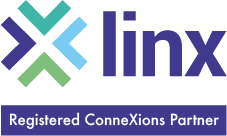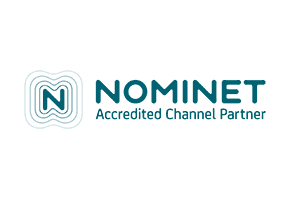
In our digital age, connectivity is the lifeblood that keeps businesses, services, and daily operations running smoothly. As data demands continue to skyrocket, organizations must carefully navigate the intricacies of internet connectivity to ensure optimal performance, reliability, and cost-effectiveness. Two pivotal concepts in this realm are IP Transit and Peering, each offering distinct advantages and trade-offs. In this article, we’ll delve into the nuances of these approaches, with a particular emphasis on the dynamic connectivity landscapes of Manchester and London.
IP Transit: The Backbone of Internet Connectivity
IP Transit, often referred to as “paying for transit,” is the traditional method of obtaining internet connectivity. In this arrangement, an organization purchases bandwidth from an Internet Service Provider (ISP) or a Transit Provider, who in turn provides access to the entire internet. This connectivity model operates on a hierarchical structure, with Tier 1 networks at the top, followed by Tier 2 and Tier 3 providers.
Advantages of IP Transit:
- Simplicity and Reliability: IP Transit offers a straightforward and dependable way to access the internet. By relying on a Transit Provider’s extensive network infrastructure, organisations can enjoy seamless connectivity without the need for complex peering arrangements.
- Global Reach: Transit Providers typically have a far-reaching network that spans multiple regions and countries, enabling organisations to access content and services worldwide with minimal latency.
- Scalability: As an organisations bandwidth demands grow, Transit Providers can easily accommodate these needs by increasing the purchased capacity, ensuring a seamless transition without disrupting existing connectivity.
Disadvantages of IP Transit:
- Cost: IP Transit can be an expensive endeavor, especially for organizations with high bandwidth requirements. Transit Providers charge based on the amount of data transferred, which can quickly escalate costs for data-intensive operations.
- Lack of Control: With IP Transit, organisations relinquish control over their internet routing decisions to the Transit Provider, potentially leading to suboptimal performance or inefficient paths for specific destinations.
- Potential Bottlenecks: In certain cases, Transit Providers may experience congestion or performance issues within their networks, which could impact the overall connectivity quality for their customers.
Peering: The Interconnected Web of Networks
Peering, on the other hand, is a more collaborative approach to internet connectivity. It involves the direct exchange of traffic between two or more networks, typically Internet Service Providers (ISPs), Content Delivery Networks (CDNs), or large enterprises. Peering agreements are established through physical interconnections at Internet Exchange Points (IXPs) or through private peering arrangements.
Advantages of Peering:
- Cost Savings: By establishing direct peering connections, organizations can significantly reduce the costs associated with IP Transit. Peering agreements often involve settlement-free arrangements, where no money is exchanged for the traffic exchange.
- Improved Performance: Peering enables more direct and efficient routing of traffic, potentially reducing latency and enhancing overall network performance, particularly for content and services hosted within the peered networks.
- Increased Resilience: With multiple peering connections, organizations can benefit from increased network redundancy and resilience, as traffic can be rerouted in case of outages or disruptions.
Disadvantages of Peering:
- Complexity: Establishing and maintaining peering relationships can be a complex and resource-intensive endeavour, requiring dedicated personnel, technical expertise, and ongoing negotiations with potential peers.
- Limited Reach: Peering connections are typically localized or regional, meaning organizations may still require IP Transit for reaching destinations outside of their peering ecosystem.
- Potential Imbalance: Peering agreements often rely on a balanced exchange of traffic. If one party consistently sends or receives significantly more traffic than the other, the peering relationship may become strained or subject to renegotiation.
The Manchester and London Connectivity Landscapes
Manchester and London, two major cities in the United Kingdom, offer distinct connectivity landscapes that shape the dynamics of IP Transit and Peering in these regions.
Manchester: A Rising Star in the Connectivity Realm
Manchester, often overshadowed by its neighbor London, has been steadily gaining prominence as a connectivity hub in recent years. The city is home to several significant Internet Exchange Points (IXPs), including LINX Manchester and IXLeeds, which facilitate peering opportunities for various networks.
IP Transit in Manchester:
While Manchester boasts a thriving peering ecosystem, IP Transit remains a crucial component for organizations seeking global connectivity. Major Transit Providers, such as Exascale, Lumen, Cogent and GTT, have a strong presence in the city, offering reliable and scalable transit options.
Peering in Manchester:
The rise of IXPs in Manchester has fueled the growth of peering opportunities within the city. LINX Manchester, in particular, has emerged as a key peering hub, attracting numerous networks and content providers. This has enabled organizations to establish cost-effective and low-latency interconnections, especially for traffic destined for local or regional destinations.
London: The Connectivity Powerhouse
London, being a global financial and technology hub, has a well-established and highly developed connectivity infrastructure, making it a prime location for both IP Transit and Peering.
IP Transit in London:
London is home to numerous Tier 1 and Tier 2 Transit Providers, offering a wide range of connectivity options for organizations of all sizes. Major players like Exascale, Lumen, Telia Carrier, and NTT Communications have a significant presence in the city, providing robust and scalable transit solutions.
Peering in London:
The London Internet Exchange (LINX) is one of the largest and most prominent IXPs in the world, facilitating peering connections between hundreds of networks. LINX’s extensive ecosystem and strategic location make it an attractive destination for content providers, enterprises, and ISPs seeking to establish peering relationships and optimize their connectivity within the region.
Choosing the Right Approach: IP Transit or Peering?
The decision to pursue IP Transit, Peering, or a combination of both strategies depends on various factors, including an organisations specific connectivity requirements, geographic location, traffic patterns, and budget considerations.
For organisations with a global presence and diverse traffic destinations, a blend of IP Transit and strategic Peering may be the optimal solution. IP Transit can provide the necessary global reach, while Peering can optimise performance and reduce costs for localised or regional traffic.
Organisations focused primarily on serving local or regional audiences may find Peering to be a more cost-effective and performant approach, leveraging the connectivity ecosystems within Manchester or London.
Conversely, organisations with limited resources or simplified connectivity needs may favor the simplicity and reliability of IP Transit, especially if their traffic patterns align well with the Transit Provider’s network footprint.
The Future of Connectivity: Evolving Landscapes and Emerging Technologies
The connectivity landscape is ever-evolving, driven by technological advancements, shifting user demands, and the emergence of new players and business models. In the coming years, we can expect to witness the following trends shaping the IP Transit and Peering realms:
- Cloud Connectivity: As cloud adoption continues to soar, the need for optimized connectivity to cloud service providers will become increasingly crucial. This may drive the development of more direct peering arrangements between enterprises and cloud platforms, potentially altering the traditional Transit and Peering dynamics.
- 5G and Edge Computing: The rollout of 5G networks and the rise of edge computing will introduce new connectivity requirements and challenges. Peering and caching arrangements at the edge may become more prevalent to support low-latency applications and services.
- Software-Defined Networking (SDN): The adoption of SDN technologies could simplify and automate the process of establishing and managing peering relationships, reducing the complexity and overhead associated with traditional peering practices.
- Internet of Things (IoT): As the Internet of Things continues to expand, the sheer volume of connected devices and the data they generate may necessitate more efficient and localized connectivity solutions, potentially favoring Peering over traditional IP Transit in certain scenarios.
Conclusion
In the ever-evolving world of internet connectivity, the choices between IP Transit and Peering are far from binary. Each approach offers distinct advantages and trade-offs, and the optimal solution often lies in a carefully crafted blend tailored to an organization’s specific needs, geographic footprint, and traffic patterns.
Manchester and London, with their vibrant connectivity ecosystems and thriving peering communities, present unique opportunities for organisations to optimise their connectivity strategies. By understanding the nuances of IP Transit and Peering, organisations can make informed decisions that balance performance, cost-effectiveness, and resilience, ensuring a seamless and efficient online experience for their users and customers.
Ultimately, the connectivity landscape is a dynamic and constantly evolving terrain, and organisations must remain agile and adaptable, continuously reevaluating their connectivity strategies to keep pace with emerging technologies, shifting market dynamics, and the ever-increasing demand for data and connectivity.





